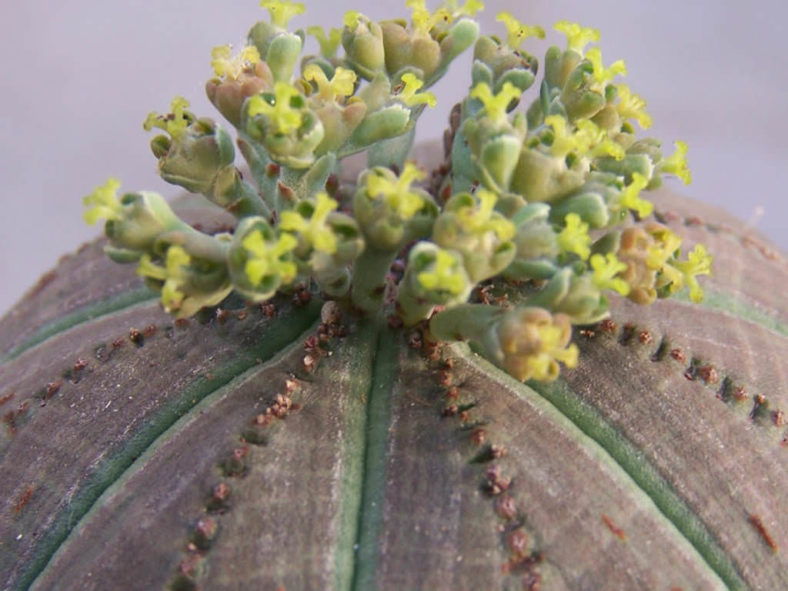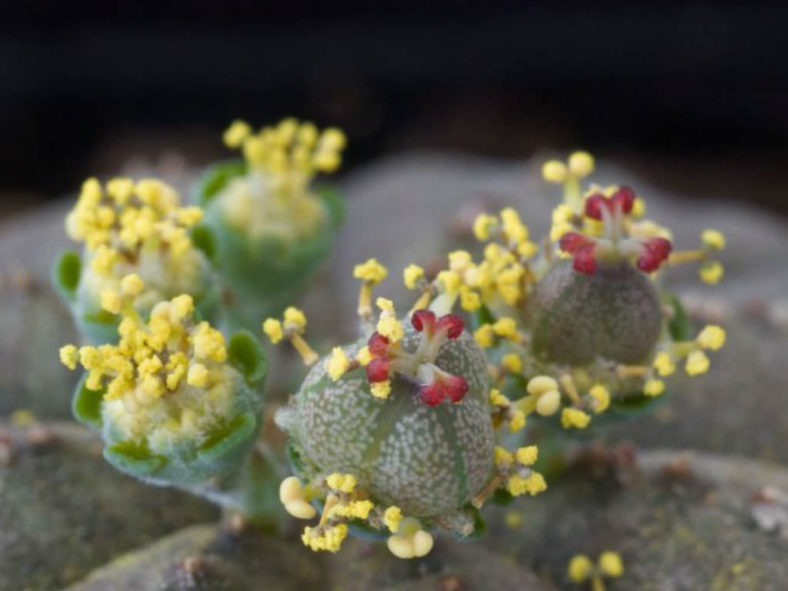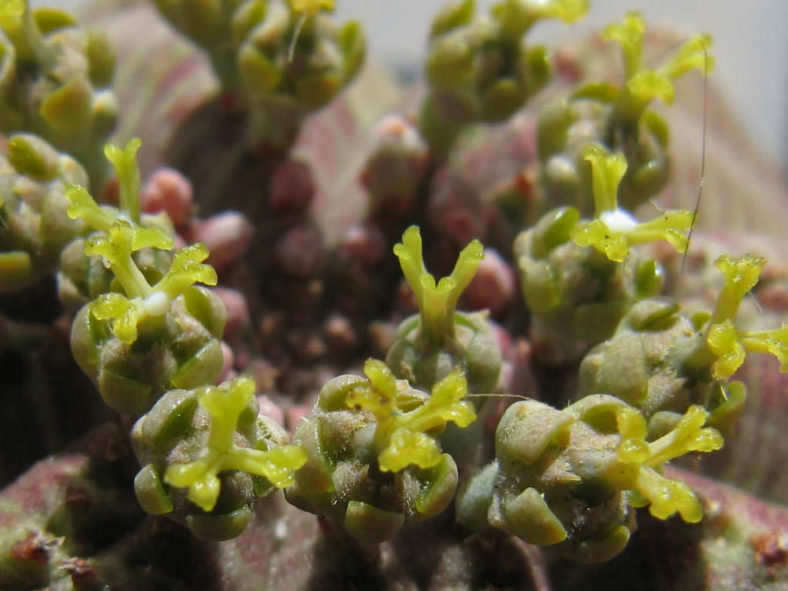Scientific Name
Euphorbia obesa Hook.
Common Name(s)
Baseball Plant, Basketball, Sea Urchin, Baseball, Living Baseball, Gingham, Golf Ball, Vetmensie, Klipnoors
Scientific Classification
Family: Euphorbiaceae
Subfamily: Euphorbioideae
Tribe: Euphorbieae
Subtribe: Euphorbiinae
Genus: Euphorbia
Flower
Color: Green
Bloom Time: Mid-summer
Description
Euphorbia obesa is a small, spineless succulent with a grey-green spherical, usually solitary stem with transverse red-brown or purplish bands. The stem grows up to 8 inches (20 cm) tall and up to 3.6 inches (9 cm) in diameter. It usually has eight vertical broad, slightly raised ribs with shallow furrows in between.
The small inflorescence is borne on a short peduncle from stem apices. Female and male flowers are born on different plants. Fruits are slightly three-angled capsules up to 0.3 inches (7 mm) in diameter.

Hardiness
USDA hardiness zone 10a to 11b: from 30 °F (−1.1 °C) to 50 °F (+10 °C).
How to Grow and Care
As the Baseball Plant often grows in partial shade in its native habitat, place it on a windowsill where it receives sun for only part of the day, preferably during the morning. If you move the plant outdoors during the summer, adapt it to the increased light gradually and position it under the high shade of a tree or shrub, where it will receive direct sunlight only at times of the day when the sun is not directly overhead. If it begins to lose its plaid coloring, it needs more light.
Like most succulents, the Baseball Plant will rot in soggy soil, so keep it in a clay pot filled with a potting mix intended for cacti. Use a pot with at least one drainage hole. If you don't have such a mix available, you can create your own by combining 1 part of regular potting soil with 1 part of coarse builders or horticultural sand and 1 part of horticultural pumice or poultry grit. From spring through autumn, water the plant thoroughly about once a week until water runs from the pot's drainage holes. Add a liquid of 10-10-10 plant food at one-quarter strength at each watering, which should be about two drops of the plant food in 1 quart of water.
Learn more at How to Grow and Care for Euphorbia.
Origin
Euphorbia obesa is native to South Africa, especially in the Cape Province.
Links
- Back to genus Euphorbia
- Plantpedia: Browse flowering plants by Scientific Name, Common Name, Genus, Family, USDA Hardiness Zone, or Origin
Photo Gallery
Click on a photo to see a larger version.




